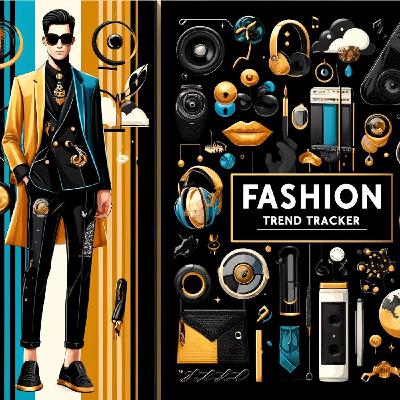Fashion's Evolving Landscape: Partnerships, Sustainability, and Emerging Tech (137 characters)
Update: 2025-08-19
Description
In the past 48 hours, the global fashion industry has seen a mix of strategic partnerships, market shifts, sustainability pushes, and emerging technologies shaping its landscape. Major trade headlines include the 8th edition of IFCO, opening this week in Istanbul, which highlights Turkiye’s design leadership and is set to draw over 30,000 global attendees. This arrives as brands seek new sourcing hubs amid changing trade terms and increased tariffs. For instance, the EU and Vietnam reached a deal lowering threatened 30 percent tariffs to 15 percent on most goods as of August 19. This move offers some stability and cost relief to many multinational fashion brands compared to last quarter’s uncertainty.
In the US, Adidas just announced a landmark five-year, 13.5 million dollar deal to outfit Miami-Dade’s school athletes, grabbing attention with both its scale and the future consumer pipeline it represents. Meanwhile, Adidas is positioned to capture further market share this year as Nike’s performance lags, with rivals like Shein, Uniqlo, Skechers, and New Balance also gaining ground.
Several fashion brands are leveraging partnerships and product launches to win consumers. In early August, Gap joined with Béis for a new luggage and apparel collection, while Anthropologie spun off its Maeve private label into a new standalone brand set to launch stores this fall. Celebrity ties also remain strong, with Nicole Kidman signing a likely 15 million dollar deal as Chanel brand ambassador.
Sustainability remains a pivotal theme. Shein was fined 1.16 million dollars for greenwashing and quickly announced reductions in supply chain emissions, including electric transport initiatives in China. Both textile innovation and regulatory pressure continue to accelerate, with global expectations rising for traceability, durability, and eco-scores in products.
AI-driven trend forecasting is enabling brands to respond faster to shifts in consumer tastes, which increasingly prioritize value over luxury branding. According to Circana, only 14 percent of US beauty buyers link higher prices with better quality, and travel-size fragrances saw a 15 percent unit sales increase, four times faster than other sizes, showing budget consciousness after several years of inflation.
Overall, compared to previous quarters, the industry is navigating cost pressures and shifting trade conditions with a focus on innovation, adaptability, and value for the new cautious consumer. Supply chains remain pressured but new deals and digital tools are helping leaders respond with agility and targeted launches.
For great deals today, check out https://amzn.to/44ci4hQ
This content was created in partnership and with the help of Artificial Intelligence AI
In the US, Adidas just announced a landmark five-year, 13.5 million dollar deal to outfit Miami-Dade’s school athletes, grabbing attention with both its scale and the future consumer pipeline it represents. Meanwhile, Adidas is positioned to capture further market share this year as Nike’s performance lags, with rivals like Shein, Uniqlo, Skechers, and New Balance also gaining ground.
Several fashion brands are leveraging partnerships and product launches to win consumers. In early August, Gap joined with Béis for a new luggage and apparel collection, while Anthropologie spun off its Maeve private label into a new standalone brand set to launch stores this fall. Celebrity ties also remain strong, with Nicole Kidman signing a likely 15 million dollar deal as Chanel brand ambassador.
Sustainability remains a pivotal theme. Shein was fined 1.16 million dollars for greenwashing and quickly announced reductions in supply chain emissions, including electric transport initiatives in China. Both textile innovation and regulatory pressure continue to accelerate, with global expectations rising for traceability, durability, and eco-scores in products.
AI-driven trend forecasting is enabling brands to respond faster to shifts in consumer tastes, which increasingly prioritize value over luxury branding. According to Circana, only 14 percent of US beauty buyers link higher prices with better quality, and travel-size fragrances saw a 15 percent unit sales increase, four times faster than other sizes, showing budget consciousness after several years of inflation.
Overall, compared to previous quarters, the industry is navigating cost pressures and shifting trade conditions with a focus on innovation, adaptability, and value for the new cautious consumer. Supply chains remain pressured but new deals and digital tools are helping leaders respond with agility and targeted launches.
For great deals today, check out https://amzn.to/44ci4hQ
This content was created in partnership and with the help of Artificial Intelligence AI
Comments
In Channel





